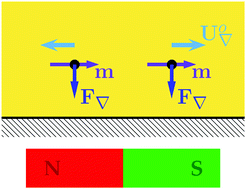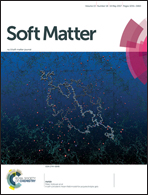Force-induced elastic matrix-mediated interactions in the presence of a rigid wall
Abstract
We consider a soft elastic matrix that contains particulate inclusions and is bounded by a rigid wall, e.g., the substrate. Such a situation arises in elastic composite materials. They may serve as soft actuators when forces are imposed on or induced between the embedded particles. We investigate how the presence of the rigid wall affects the interactions between the inclusions. First, for no-slip boundary conditions, we transfer Blake's derivation of a corresponding Green's function from low-Reynolds-number hydrodynamics to the linearly elastic case. Then, we list the general expressions to describe the situation for point-like particles in the presence of no-slip and free-slip surface conditions. To compare the effect of the different surface conditions to each other and to the bulk behavior, we address the example situation of pairwise interactions between two embedded particles. The axis through both particle centers is either aligned parallel or perpendicular to the surface. Our results suggest that walls with free-slip surface conditions are preferred when they serve as substrates for soft actuators made from elastic composite materials. As we further demonstrate, the presence of a rigid wall can qualitatively change the interactions between the inclusions. In effect, it can switch attractive interactions into repulsive ones (and vice versa). It should be straightforward to observe the effects in future experiments and to combine our results, e.g., with the modeling of biological cells and tissue on rigid surfaces.



 Please wait while we load your content...
Please wait while we load your content...